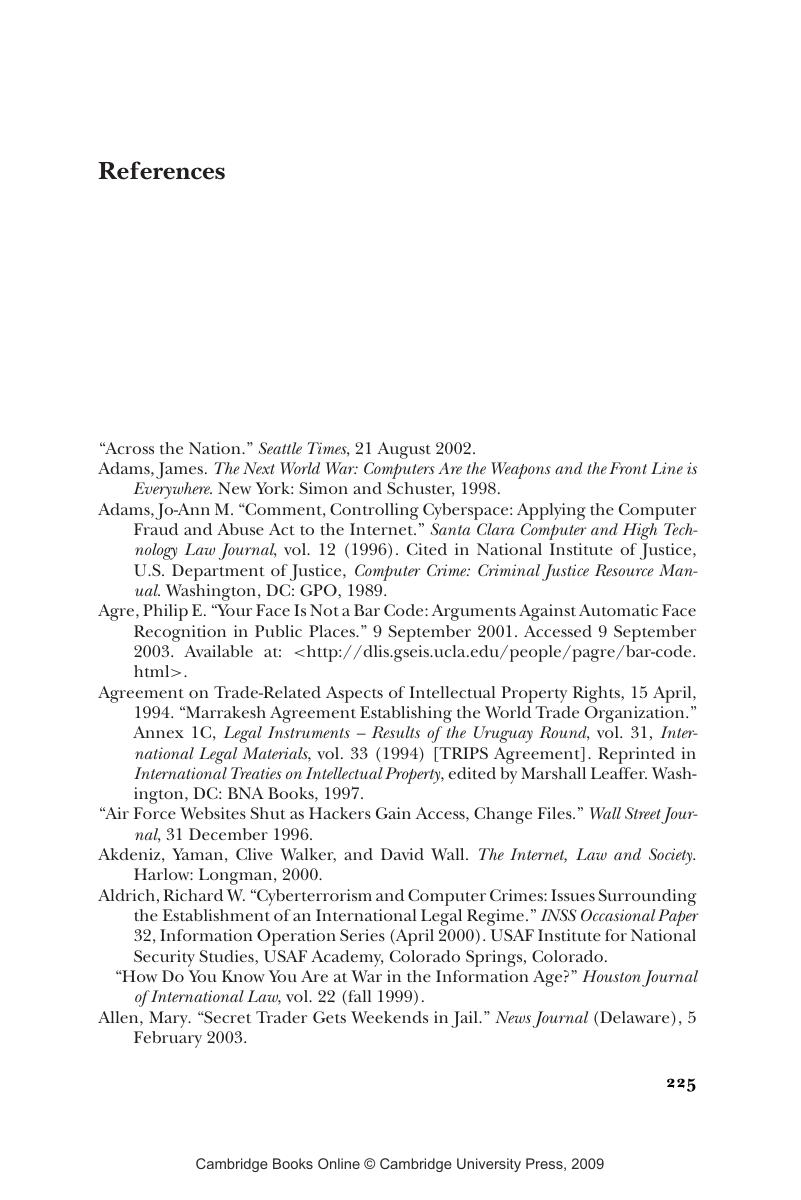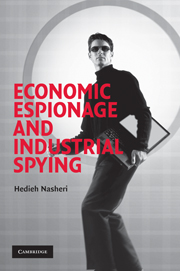Book contents
- Frontmatter
- Contents
- Preface
- Acronyms and Abbreviations
- 1 Dimensions of Economic Espionage and the Criminalization of Trade Secret Theft
- 2 Transition to an Information Society – Increasing Interconnections and Interdependence
- 3 International Dimensions of Business and Commerce
- 4 Competitiveness and Legal Collection Versus Espionage and Economic Crime
- 5 Tensions Between Security and Openness
- 6 The New Rule for Keeping Secrets – The Economic Espionage Act
- 7 Multinational Conspiracy or Natural Evolution of Market Economy
- Appendix A
- Appendix B
- Appendix C
- Notes
- References
- Index
- References
References
Published online by Cambridge University Press: 05 June 2012
- Frontmatter
- Contents
- Preface
- Acronyms and Abbreviations
- 1 Dimensions of Economic Espionage and the Criminalization of Trade Secret Theft
- 2 Transition to an Information Society – Increasing Interconnections and Interdependence
- 3 International Dimensions of Business and Commerce
- 4 Competitiveness and Legal Collection Versus Espionage and Economic Crime
- 5 Tensions Between Security and Openness
- 6 The New Rule for Keeping Secrets – The Economic Espionage Act
- 7 Multinational Conspiracy or Natural Evolution of Market Economy
- Appendix A
- Appendix B
- Appendix C
- Notes
- References
- Index
- References
Summary

- Type
- Chapter
- Information
- Economic Espionage and Industrial Spying , pp. 225 - 260Publisher: Cambridge University PressPrint publication year: 2004

